Patrick Mitran
On Rate-Splitting With Non-unique Decoding In Multi-cell Massive MIMO Systems
Aug 06, 2022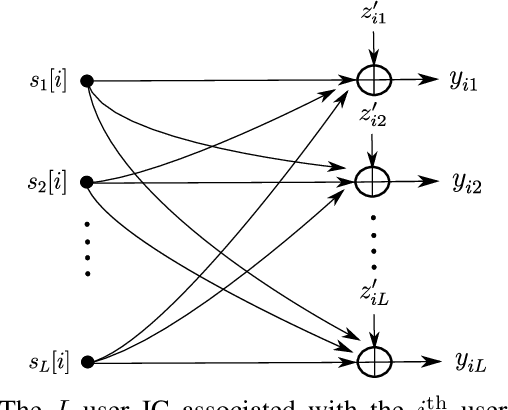
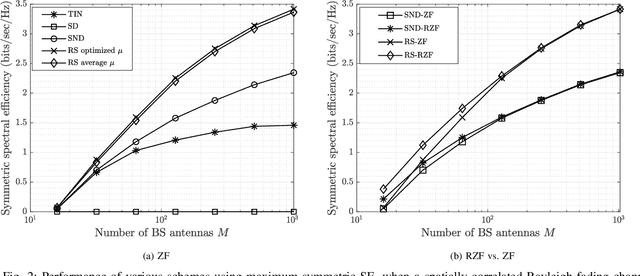
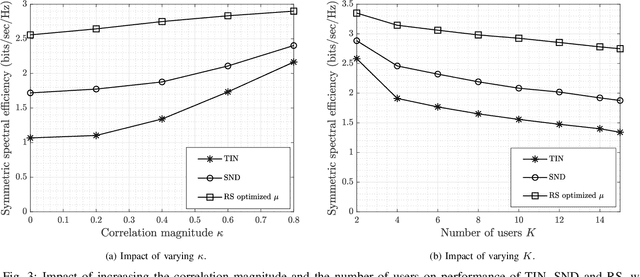
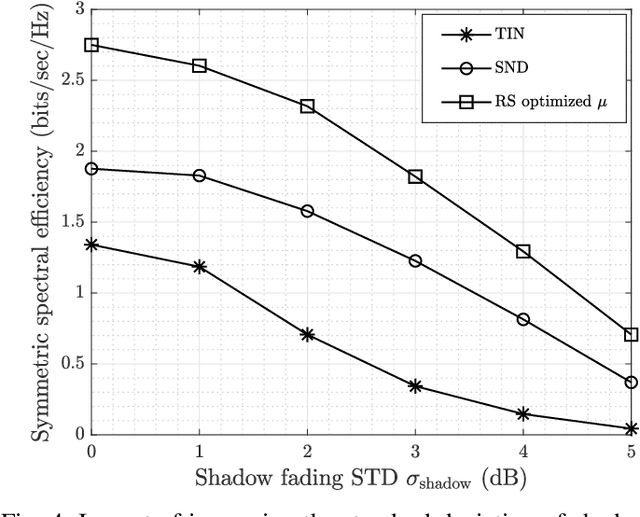
Abstract:We consider the downlink of a multi-cell massive MIMO system suffering from asymptotic rate saturation due to pilot contamination. As opposed to treating pilot contamination interference as noise (TIN), we study the performance of decoding the pilot contamination interference. We model pilot-sharing users as an interference channel (IC) and study the performance of schemes that decode this interference partially based on rate-splitting (RS), and compare the performance to schemes that decode the interference in its entirety based on simultaneous unique decoding (SD) or non-unique decoding (SND). For RS, we non-uniquely decode each layer of the pilot contamination interference and use one common power splitting coefficient per IC. Additionally, we establish an achievable region for this RS scheme. Solving a maximum symmetric rate allocation problem based on linear programming (LP), we show that for zero-forcing (ZF) with spatially correlated/uncorrelated channels and with a practical number of BS antennas, RS achieves significantly higher spectral efficiencies than TIN, SD and SND. Furthermore, we numerically examine the impact of increasing the correlation of the channel across antennas, the number of users as well as the degree of shadow fading. In all cases, we show that RS maintains significant gain over TIN, SD and SND.
Joint Uplink-Downlink Resource Allocation for Multi-User IRS-Assisted Systems
Aug 25, 2021
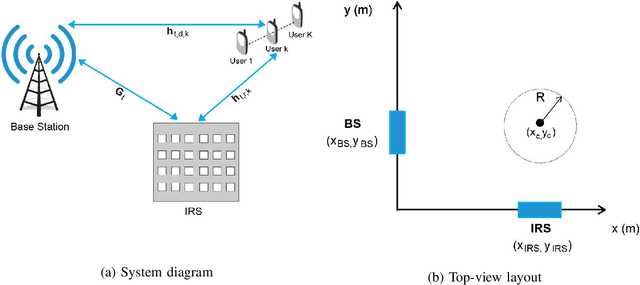
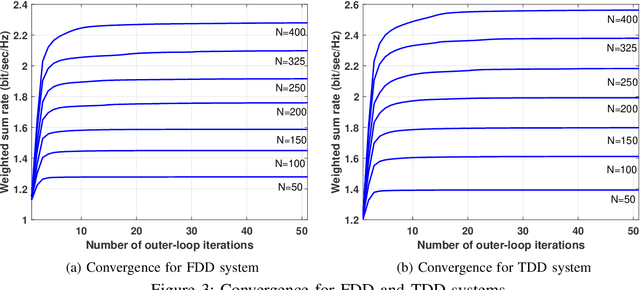
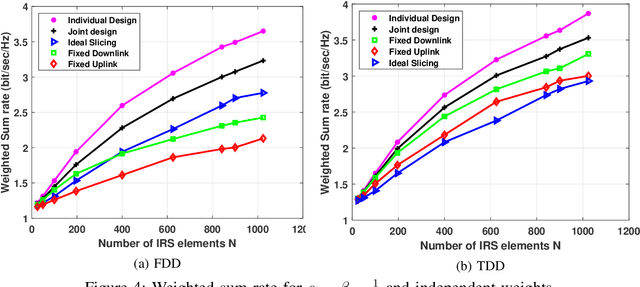
Abstract:We investigate the joint uplink-downlink design for time-division-duplexing (TDD) and frequency-division-duplexing (FDD) multi-user systems aided by an intelligent reflecting surface (IRS). We formulate and solve a multi-objective optimization problem to maximize uplink and downlink rates as a weighted-sum problem (WSP) that captures the trade-off between achievable uplink and downlink rates. We propose a resource allocation design that optimizes the WSP by jointly optimizing the beamforming vectors, power control and IRS phase shifts where the same IRS configuration is used for assisting uplink and downlink transmissions. In TDD, the proposed IRS design reduces the overhead associated with IRS configuration and the need for quiet periods while updating the IRS. In addition, a joint IRS design is critical for supporting concurrent uplink and downlink transmissions in FDD. We investigate the effect of different user-weighting strategies and different parameters on the performance of the joint IRS design and the resultant uplink-downlink trade-off regions. In all FDD scenarios and some TDD scenarios, the joint design significantly outperforms the heuristic of using the IRS configuration optimized for uplink (respectively, downlink) to assist the downlink (respectively, uplink) transmissions and substantially bridges the gap to the upper bound of allowing different IRS configurations in uplink and downlink.
Progressive Transmission using Recurrent Neural Networks
Aug 03, 2021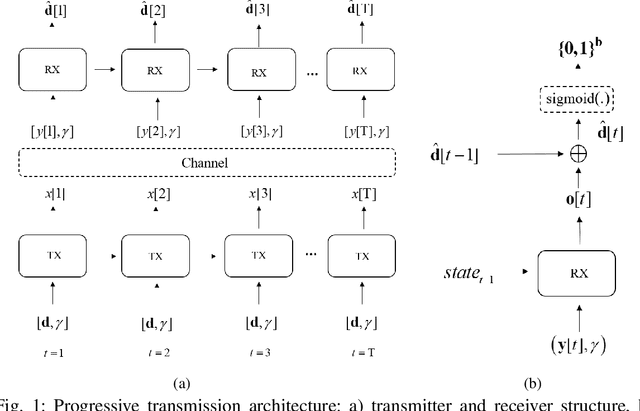

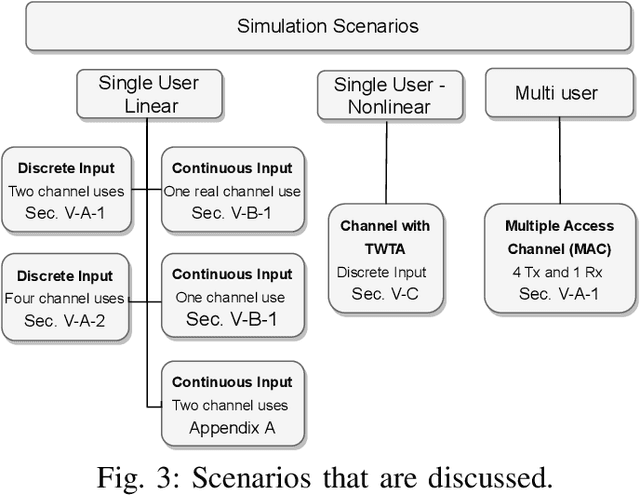
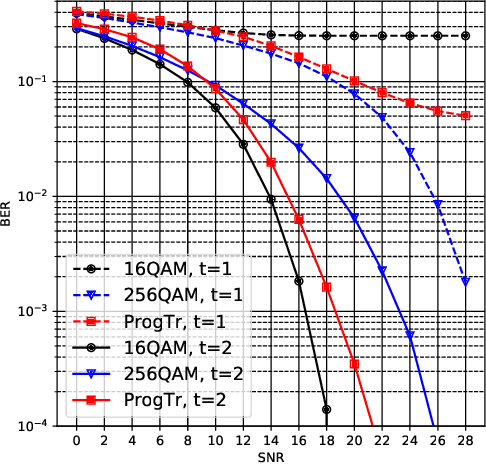
Abstract:In this paper, we investigate a new machine learning-based transmission strategy called progressive transmission or ProgTr. In ProgTr, there are b variables that should be transmitted using at most T channel uses. The transmitter aims to send the data to the receiver as fast as possible and with as few channel uses as possible (as channel conditions permit) while the receiver refines its estimate after each channel use. We use recurrent neural networks as the building block of both the transmitter and receiver where the SNR is provided as an input that represents the channel conditions. To show how ProgTr works, the proposed scheme was simulated in different scenarios including single/multi-user settings, different channel conditions, and for both discrete and continuous input data. The results show that ProgTr can achieve better performance compared to conventional modulation methods. In addition to performance metrics such as BER, bit-wise mutual information is used to provide some interpretation to how the transmitter and receiver operate in ProgTr.
 Add to Chrome
Add to Chrome Add to Firefox
Add to Firefox Add to Edge
Add to Edge